- Date
- mercredi 19 mars 2025
The key takeaway here is simple: don’t try to out think this Rockies snowpack. Avoid consequential avalanche terrain.
The Canadian Rockies had a significant storm around the weekend of March 9, delivering up to 80 cm of new snow across the region. All this new snow landed on a weak underlying snowpack, consisting mostly of faceted snow crystals–loose, sugary grains that offer little strength or cohesion. As a result, the new snow is resting on what is essentially layers of ball bearings.
During the storm, the region underwent a major avalanche cycle, with many large avalanches up to size 3.5. While the rate of natural avalanche activity has declined since the storm, large avalanches continue to occur daily in the Rockies. These avalanches are likely being triggered by intense solar radiation and significant temperature fluctuations throughout the day.
Don’t view a decreased frequency of natural avalanches as a sign of declining risk–the snowpack remains highly susceptible to human-triggered avalanches. This week, there have been numerous reports of people remotely triggering avalanches or experiencing close calls.
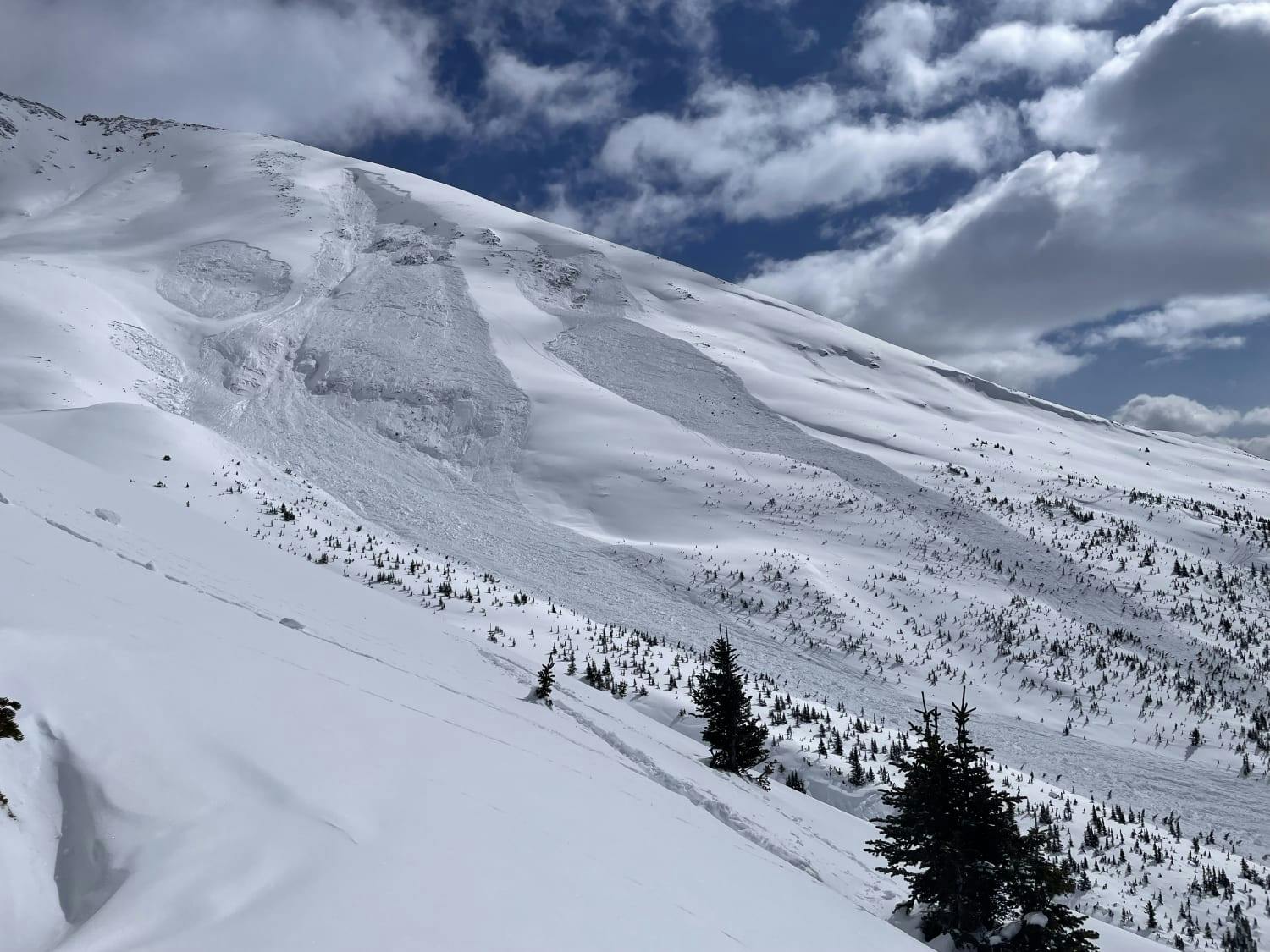
A skier remote triggered a size 2 avalanche from 24 degree terrain, which resulted in six additional sympathetic persistent and deep persistent slab releases. Four were size 2-2.5, and two were size 3-3.5. Credit: MIN User chrisgranter
Tragically, two people died in the Rockies this past week–both fatalities occurred on the same day in steep, treed terrain. Photos from the incidents show fairly dense tree cover, which can give a false sense of security and may lead us to let our guard down. These tragic incidents underscore the need for caution, even in areas where we may not expect avalanches.
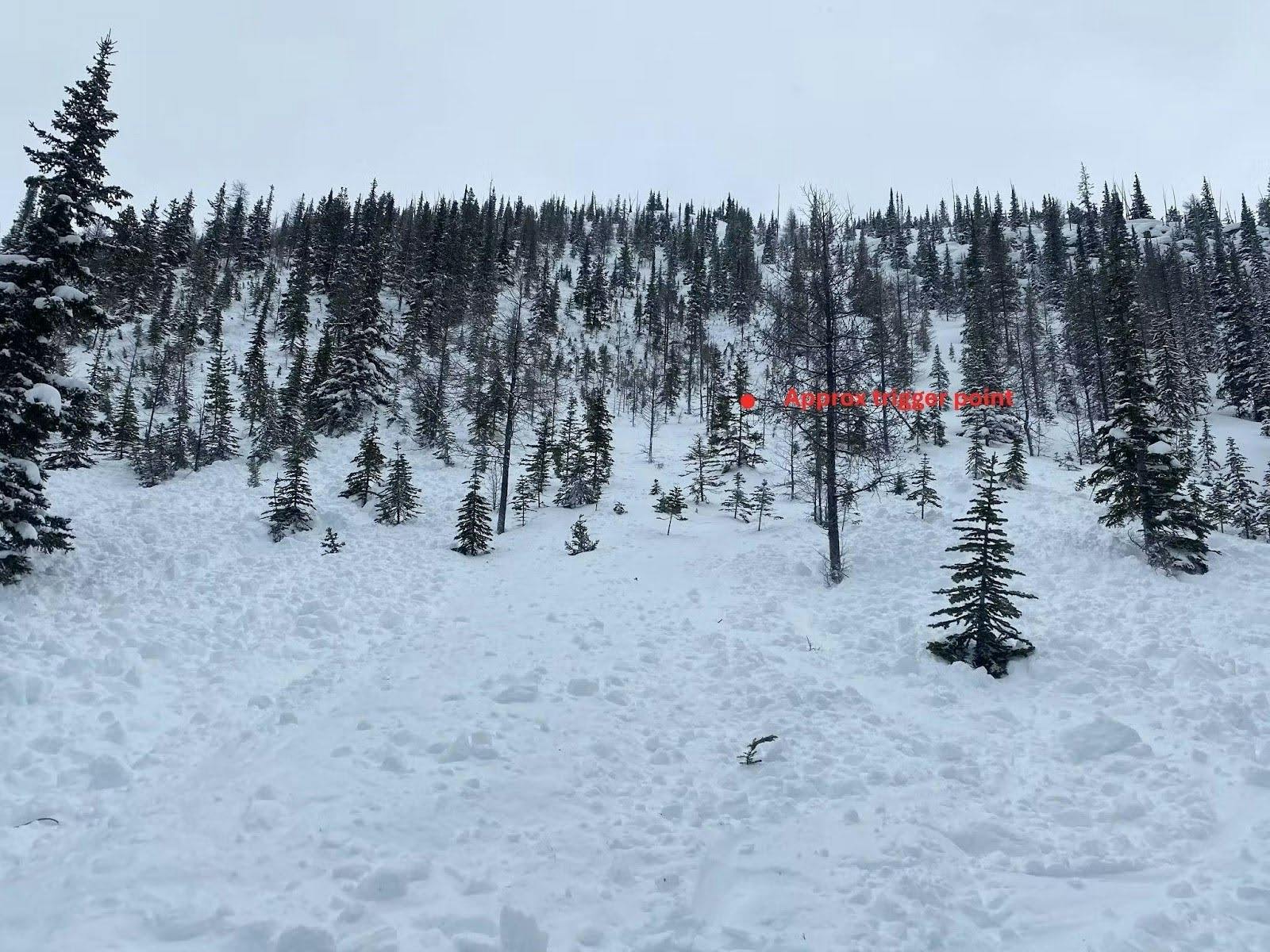
Small to medium sized trees in the start zone and track of a fatal avalanche on March 14. Credit: BNP Visitor Safety. Read the Fatal Avalanche Incident Report
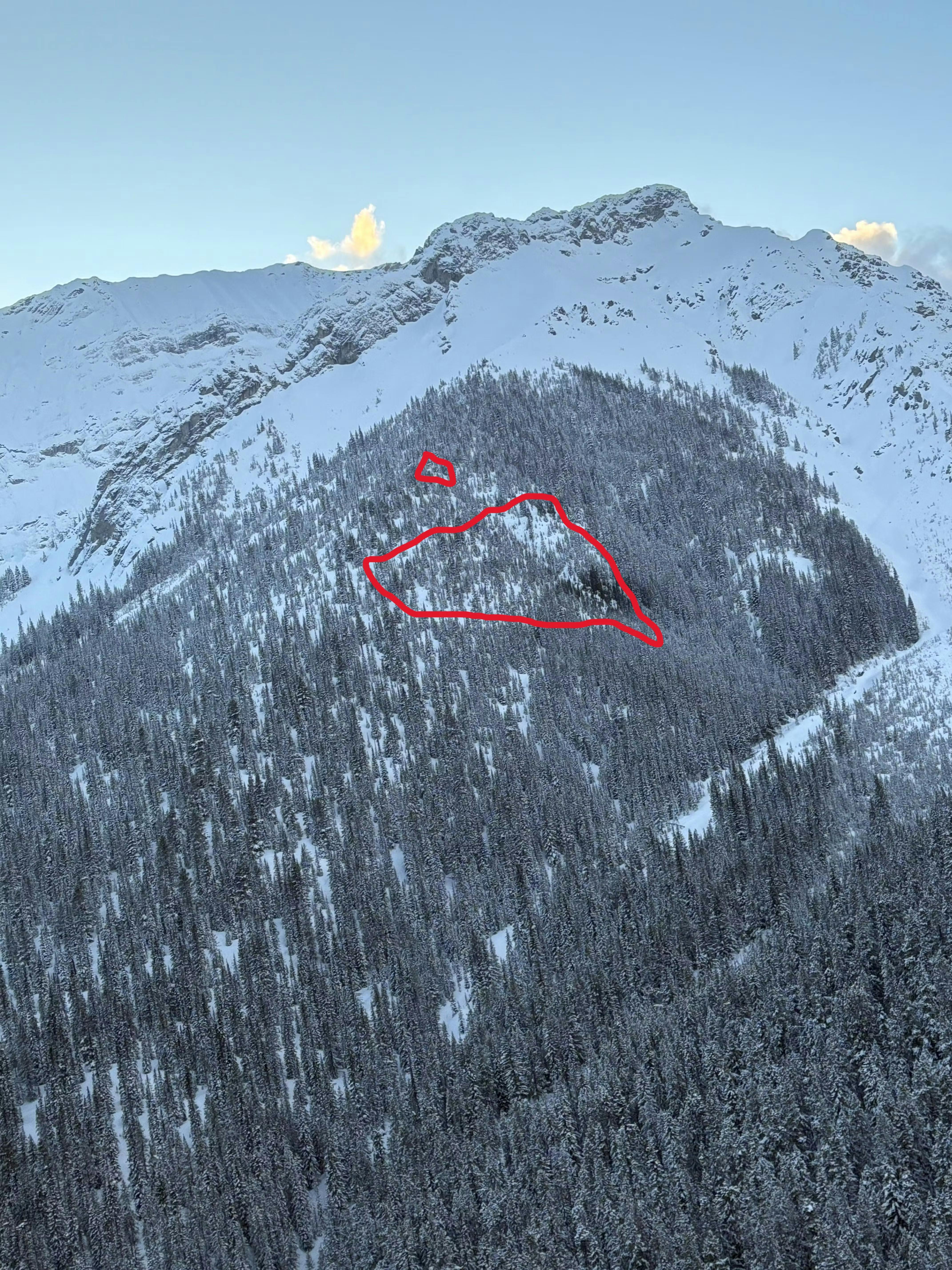
Image of avalanche path taken from rescue helicopter after fatal avalanche on March 14. The lower red outline indicates the avalanche the skier was caught in, and the smaller outline indicates a sympathetic avalanche. Credit: Kananaskis Mountain Rescue. Read the Fatal Avalanche Incident Report
While it may be tempting to over-analyze the various layers within the snowpack right now in search of safety, the key takeaway here is simple: don’t try to out think this snowpack. The safest course of action is to avoid all avalanche terrain of consequence, including terrain traps and runouts.
Another 10-15 cm of snow forecast before the weekend, which may lead to favourable skiing conditions. However, the underlying instability in the snowpack will still pose significant risks. Stick to low-angle glades and avoid any terrain that exposes you to avalanche paths. Persistent weak layers are especially dangerous because they can lead to large, unpredictable avalanches, may be triggered from a distance, may cause sympathetic avalanches, and may propagate widely.
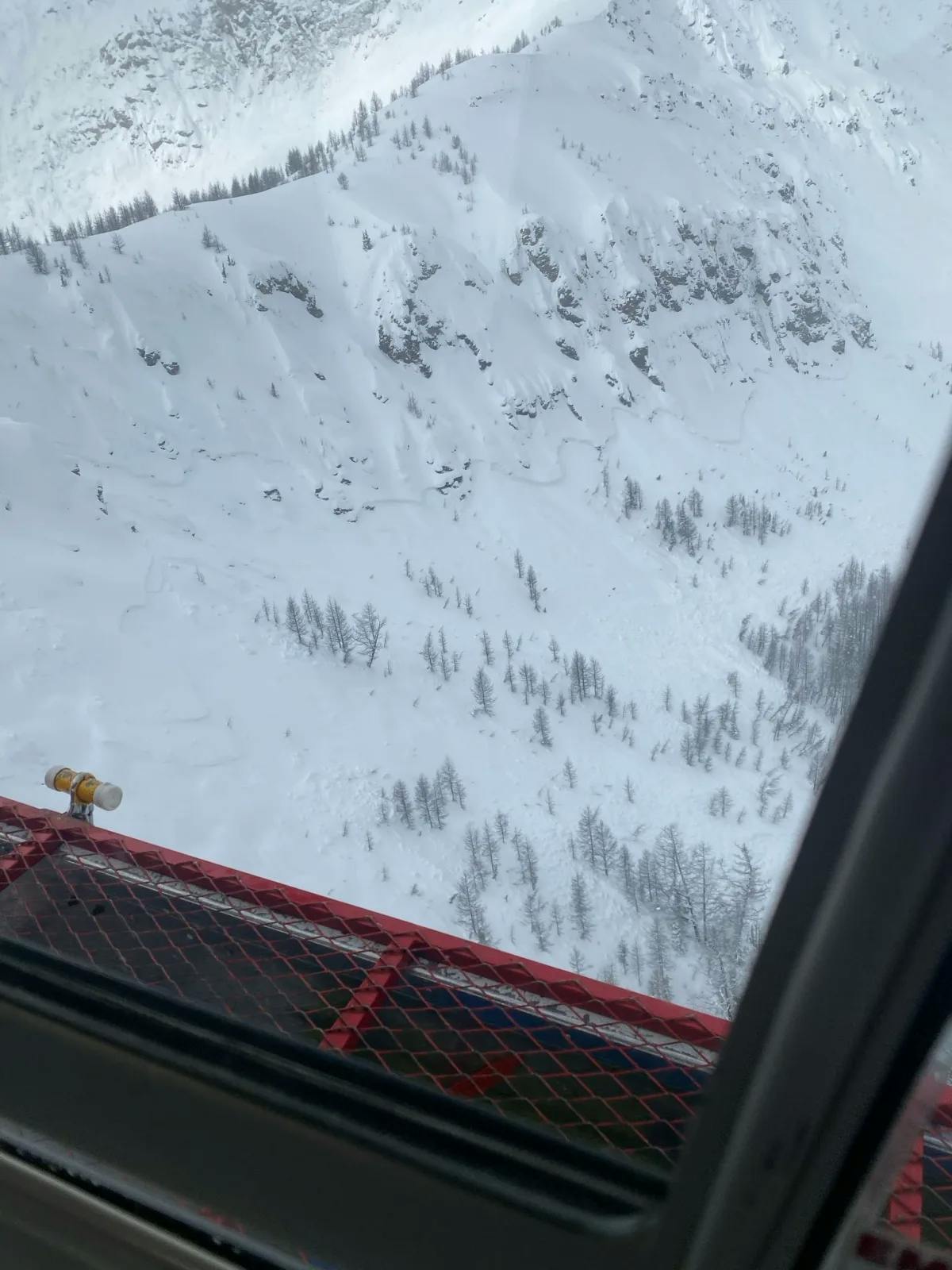
Banff Parks Mountain Safety staff observed this avalanche on a rescue flight. It propagated for 2.4 km! It likely initiated on a persistent weak layer and stepped down to the deep persistent layer at the ground in some places. Credit: Parks Mountain Safety
This is not a short-term issue. The weak layers buried deep in the snowpack are not expected to heal quickly and will continue to pose a problem for a while, requiring sustained caution. We use the word “persistent slab” in the avalanche problems section of the forecast because that’s what it is–an instability for an extended period of time.
Ice climbers should also assess their surroundings carefully. Be mindful of terrain you might normally consider benign—does the steep, treed slope above you have the potential to avalanche?
The snowpack in the central Rockies remains complex, and continues to demand caution, conservative decision-making, and careful terrain choices. In these conditions, even small missteps can have serious consequences. Before heading into the mountains, always check the latest avalanche forecast at avalanche.ca and ensure you are carrying—and know how to use—the essential gear: transceiver, probe and shovel. The mountains aren’t going anywhere—make choices that ensure you can return to enjoy them another day.
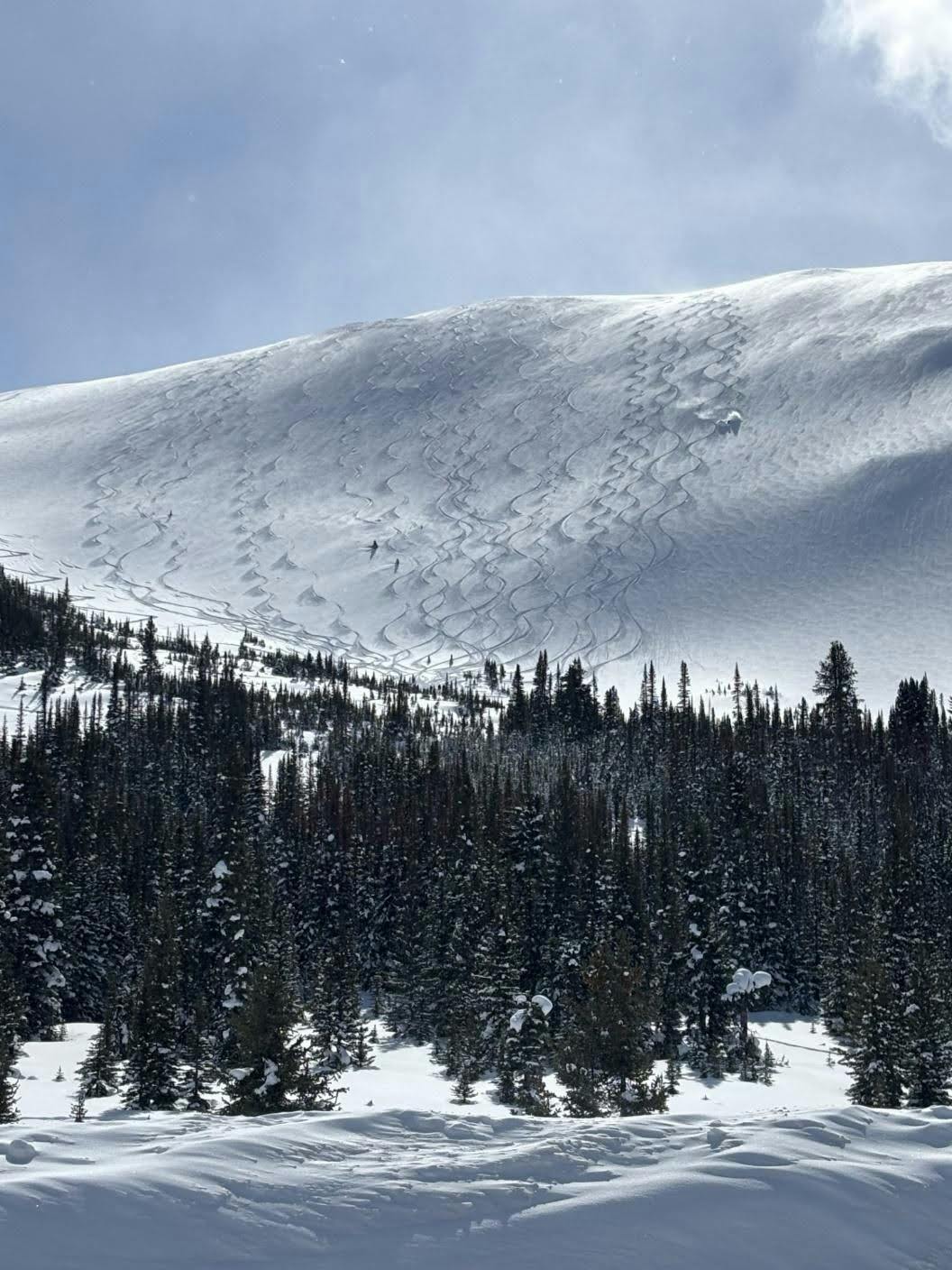
People starting to step out into serious avalanche terrain at Parker Ridge. Numerous avalanches up to size 3.5 occurred across the valley in previous days. Credit: Jasper National Park Visitor Safety
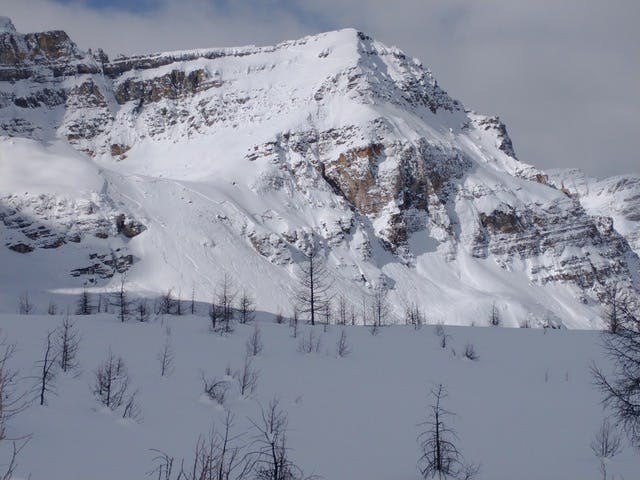
A size 3.5 natural avalanche this week at Assiniboine Lodge. Credit: Claude Duchesne
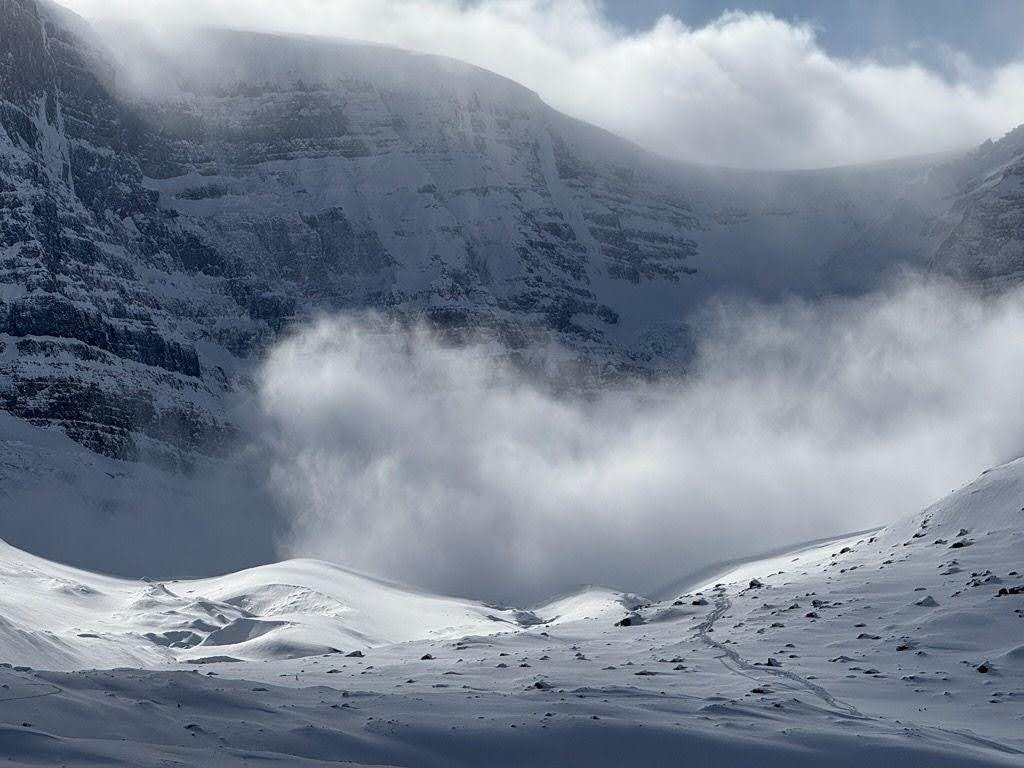
Jasper National Park Visitor Safety was called out when a large powder cloud was observed coming off Mount Kitchener while multiple snowshoeing groups were in the area. No one was involved. Credit: Terry Larson